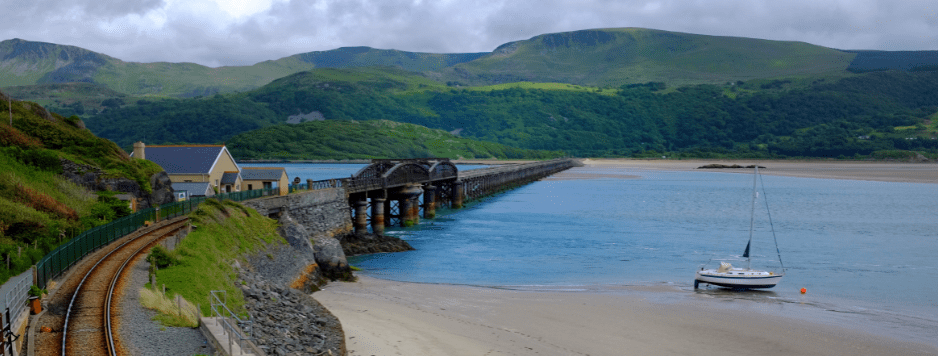-
Project title
Barmouth Viaduct, North Wales
-
Project value
£20k
-
Clients
Network Rail
Ecus played a key part in the early stages of the planning and environmental assessment for the works on the Barmouth viaduct, which spans the Afon Mawddach estuary, Gwynedd, North Wales.
December 2022 saw the reopening of the iconic Barmouth Viaduct in North Wales following essential structural refurbishment works. The Grade II* listed viaduct is the longest timber viaduct in Wales and one of the oldest in use in Britain.
Network Rail has invested £30m into the restoration works on the viaduct. The grade II* listed structure was closed for eight weeks over the autumn and winter of 2022 to carry out vital engineering work to futureproof the iconic 150 year old structure, and provide rail services to the local community.
Ecus’s consultants provided vital consultancy support to Network Rail and their engineers before the project started, commencing with a register of requirements including legislation and stakeholder remits. We produced Environmental Impact Assessment screening requests and consulted with Natural Resource Wales and Gwynedd Council, under the Marine Works (EIA Regulations) 2007 (as amended) and the Town and Country Planning (Environmental Impact Assessment) Regulations 2017. We also carried out Habitats Regulations Assessment Screening, which considered the potential significant effects on the features of the Pen Llyn a’r Sarnau Special Area of Conservation (SAC).
From this, our consultants developed an Environmental Action Plan to communicate the outcome of the environmental work done. We confirmed that the project did not require an Environmental Impact Assessment and established a number of clear environmental requirements that would need to be met through the Marine Licensing process.
We procured and managed specialist technical support from Niras Consulting on intertidal habitat surveys and scoping, and an estuarine fish ecological study, as part of the evidence plan for consideration of potential effects on the Pen Llyn a’r Sarnau SAC. The habitat survey mapped the extent and distribution of the intertidal biotopes for the viaduct corridor. A fish ecology study included a literature review to inform the wider environmental assessment and project development. Fish species associated with the SAC habitats, and other projected, migratory, and commercial fish assemblage was taken into consideration. Access health and safety requirements, and scheduling of the survey for a suitable spring tide around other programme constraints, were both critical for delivery of the onsite element.
Read Network Rail’s story.

